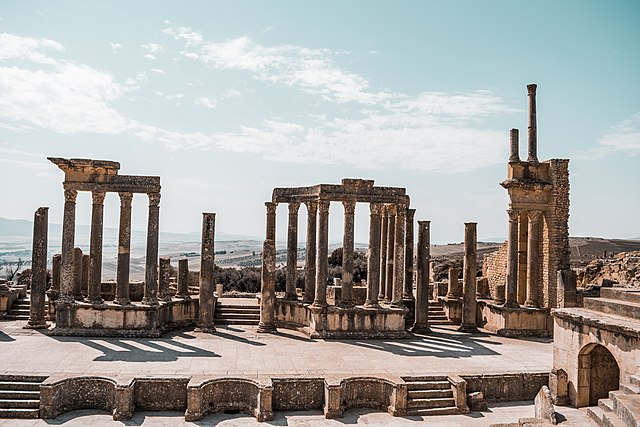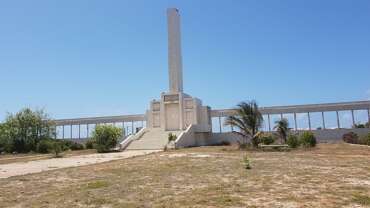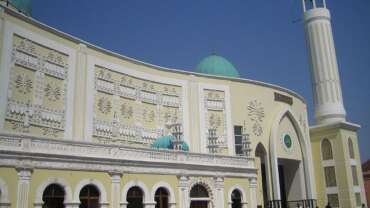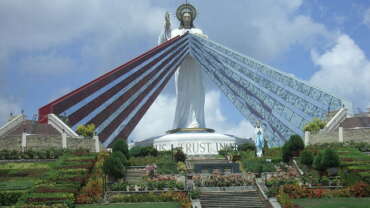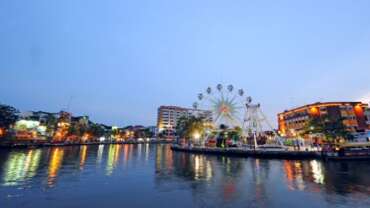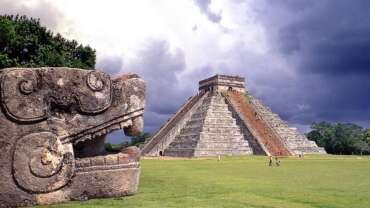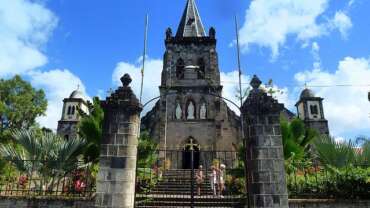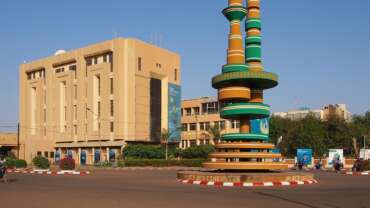Tunisia - I love Tunisia!
Tunisia is a captivating destination unlike any other. One that will surprise and delight you in so many memorable ways.
And with a variety of hotels from all inclusive resorts to luxury and boutique hotels, it’s also one of the best value destinations on the Mediterranean with something for everyone
Sun-seekers will relish the warm weather and some of the best beaches on the Mediterranean. Those who prefer their holidays action-packed will be able to try every water-sport under the sun along the 800 miles of coastline, or stay inland for desert thrills such as quad biking and sand boarding. And for those into history, Tunisia is home to some of the world’s finest Roman ruins, as well as eight UNESCO World Heritage Sites. The bustling souks and medinas are the perfect place to go for unique, handmade crafts and you’ll never be too far from a café or restaurant offering delicious food, chilled wine and refreshing local lemon juice. There are also world-class golf courses, luxurious spas specialising in Thalassotherapy and when night falls, Tunisia’s thriving bar and club scene means you can dance the night away.
History of Tunisia
Tunisia was called Ifrīqiyyah in the early centuries of the Islamic period. That name, in turn, comes from the Roman word for Africa and the name also given by the Romans to their first African colony following the Punic Wars against the Carthaginians in 264–146 BCE. Following the decline of Rome, the region was ruled briefly by the Vandals and then the Byzantine Empire before being conquered by the Arabs in 647 CE. Although the Arabs initially unified North Africa, by 1230 a separate Tunisian dynasty had been established by the Ḥafṣids. Muslim Andalusians migrated to the area after having been forced out of Spain during the Reconquista, particularly following the defeat of the Muslim kingdom of Granada in 1492. By 1574, Tunisia was incorporated into the Ottoman Empire, whose control of the region, always tenuous, had all but dissolved by the 19th century.
Tunisia is the smallest of the Maghrib states and consequently the most cohesive. By the beginning of the 19th century, virtually all of its inhabitants spoke Arabic. Berber, the earlier language of the Maghrib, survived in Tunisia in only a few pockets, mainly in the extreme south. The vast majority of the population was Muslim, with a small Jewish minority. A single major city, Tunis, dominated the countryside both politically and culturally. Tunis itself was located near the site of the ancient city-state of Carthage. More easily controlled from within than any other Maghrib country, Tunisia was also more open to the influence of people and ideas from abroad. Roman Africa, for example, was the most intensively Christianized portion of North Africa, and Ifrīqiyyah was later more quickly and more thoroughly Islamicized.
A small state with limited resources, Tunisia nonetheless managed to retain considerable autonomy within the framework of the larger empires that frequently ruled it from afar. This status was achieved, for example, under the ʿAbbāsids in the 9th century and later under the Ottomans. Tunisia’s geographic and historical legacy helped prepare it for the shocks it received in the 19th century as a land caught between an expanding Europe and a declining Ottoman Empire. Yet, Tunisia proved to be as vulnerable economically as it was militarily.
People of Tunisia
Ethnic groups
The population of Tunisia is essentially Arab Berber. However, throughout the centuries Tunisia has received various waves of immigration that have included Phoenicians, sub-Saharan Africans, Jews, Romans, Vandals, and Arabs; Muslim refugees from Sicily settled in Al-Sāḥil after their homeland was captured by the Normans in 1091. The most notable immigration was that of the Spanish Moors (Muslims), which began after the fall of Sevilla (Seville), Spain, as a result of the Reconquista in 1248 and which turned into a veritable exodus in the early 17th century. As a result, some 200,000 Spanish Muslims settled in the area of Tunis, in the Majardah valley, and on the Sharīk Peninsula in the north, bringing with them their urban culture and more advanced agricultural and irrigation techniques. Finally, from the 16th to the 19th century, the Ottomans brought their own blend of Asian and European traditions. This great ethnic diversity is still seen in the variety of Tunisian family names.
Languages
Arabic is the official language, and most natives speak a dialect of Tunisian Arabic. Modern Standard Arabic is taught in schools. The cultural Arabization of the country was largely completed by the end of the 12th century, and currently only a tiny fraction of the population—most of them in the south—still speak one of the Berber languages. French, introduced during the protectorate (1881–1956), came into wider use only after independence, because of the spread of education. It continues to play an important role in the press, education, and government. To a lesser extent, English and Italian also serve as lingua francas.
Religion
Virtually the entire population is Muslim, and Islam, in its Mālikī Sunni form, is the state religion. Christian and Jewish minorities have declined substantially in number since independence; non-Muslims numbered more than 300,000 in 1956 but have since been reduced to only tens of thousands. Official openness to religious diversity permits both communities to practice their faiths.
Art & Culture of Tunisia
Dotted with the ruins of ancient civilizations, Tunisia is an important location for the study of world archaeology and architecture. Among the most significant of its numerous historic sites are Al-Zaytūnah Mosque in Tunis, which dates to the 8th century CE, the slightly older Great Mosque of ʿUqbah ibn Nāfiʿ in Kairouan, and the remains of the ancient city of Carthage.
Although Tunisians generally use French or English in the scientific disciplines, they remain genuinely attached to Arabic in the literary sphere—in poetry, the novel, and the short story. Historical figures of philosophy and literature, such as the 11th-century litterateurs Ibrāhīm al-Ḥuṣrī, Ḥasan ibn Rashīq, and Muḥammad ibn Sharaf al-Qayrawānī and the 14th-century polymath Ibn Khaldūn, are still revered. Modern Tunisian literature grew from a cultural renaissance in the early 20th century. Social essayist Tahar Haddad, satirist Ali Douagi, poet Aboul Kacem Chabbi, and others have paved the way for a new realist trend in Tunisian literature by combining modern European styles with contemporary Tunisian themes. Increasingly, Tunisian writers, including women, are gaining international prominence.
Tunisian cinema has been gradually making its way to an international audience—among the luminaries of the Tunisian cinema are the directors Moufida Tlatli (Ṣamt al-Quṣūr [1994; The Silence of the Palaces]) and Férid Boughedir (Un été à La Goulette [1995; A Summer in La Goulette])—and Tunisia has been the location for major motion picture productions, including Star Wars (1977) and The English Patient (1996).
Cultural Life
Tunisians are an independent-minded people who take pride in the rich admixture of native and foreign influences that make up their national character. Their Arab-Muslim country was deeply imbued with French culture during the 75 years of the protectorate, which ended in 1956.
Daily life and social customs
In general, though Tunisians consider themselves to be more liberal and tolerant than their neighbours—most urban women, for example, dress in Western clothes and do not veil themselves, and (though it is considered inappropriate by some Tunisian Muslims) locally made wines and spirits are consumed—they still maintain a strong Islamic identity. Thus, Tunisians absorb new cultural influences from abroad while insisting on upholding their own values, but they are also vigilant about the impact of Western influence on their way of life. Those concerns led to a revival of some forms of social and religious conservatism in the 1990s, notably affecting women in the public sphere. Street cafés have increasingly become the preserve of men, especially in rural areas where relations between the sexes are still governed by conservative social norms.
Even Westernized Tunisians adhere to certain traditional values; foremost among these is the role of the family as the centre of social life. Meals are an important time for families to gather. Tunisian cuisine consists of a medley of European cuisine—largely French and Italian—and traditional dishes. As in the rest of the Maghrib, couscous, a semolina-based pasta, is a staple of virtually every meal and is customarily served with a rich stew. Other native basics are lamb, peppers, onions, chickpeas (often served in cakes as a dessert), and olive oil. Various types of seafood can be found near the coast. Unlike other cuisines of the Maghrib, Tunisian food is replete with hot spices, and harissa, a fiery red sauce, is served with most dishes.
Tunisians observe the standard Islamic holidays as well as several secular and national holidays, such as Independence Day (March 20) and Women’s Day (August 13).
Tunisia - On the beach!
From the gorgeous Tunis bay to the tree-covered hills of Tabarka, from the peaceful charm of Mahdia and Monastir to the modernity of Yasmine Hammamet, from the quiet landscapes of Djerba to the hustle and bustle of Sousse, every seaside resort has its own unique charms. Their beaches are closely supervised and different coloured flags indicate warnings and recommendations depending on the weather, the wind direction and the strength of the currents. But alongside Tunisia’s big resorts, there are also plenty of lesser known beaches and idyllic wild coves like Korbous, Cap Serrat, Sidi Jemour and El Hamra. Seek them out and enjoy an unforgettable experience.



